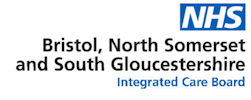

A routine mole mapping service or mole surveillance service is not available in BNSSG.
Please see the advice from the Primary Care Dermatology Society on atypical (dysplastic) melanocytic naevi.
Patients with multiple benign looking naevi or only a few atypical naevi which have not changed (and no FH of melanoma) can be managed in primary care with advice about self-examination, 3 monthly reviews in surgery and/or self-photographing of moles.
David de Berker (consultant dermatologist at UHBW) has the following advice:
'We do get patients with all kinds of scenarios, multiple benign normal moles, multiple atypical moles, one atypical mole among lots of normal moles and so on. Mole mapping is usually only undertaken if there are several risk factors or one over riding factor like lots of atypical moles. However, we would usually be seeing such a patient on the basis of suspicion concerning a particular mole and the context would then drive the next step.
Having lots of average looking moles is not a reason for referral.'
See the following guide from Clinical Knowledge Summaries:
If there is any suspicion that a mole is malignant, then the best route to an opinion is via the Skin - USC (2WW) pathway.
Patients who have multiple moles but who do not have a mole that is suspected to be malignant can usually be managed in primary care.
PCDS (1) recommends the following general advice:
Atypical Mole Syndrome (AMS) and Familial Atypical Mole and Melanoma syndrome (FAMMM)
Referral for dermatology review should be considered in the following scenarios (1):
If there is still any uncertainty about the need for a dermatology opinion then please consider using Advice & Guidance. (there is an option for secondary care to convert to a referral if the box on eRS is ticked).
Routine referrals for mole surveillance are usually not indicated and may be returned with advice to consider alternative pathways.
If there are concerning moles then an urgent suspected cancer referral should be considered.
Alternatively, Dermatology Advice and Guidance can be helpful if there is still uncertainty. Referrers can use the conversion to referral option which allows the dermatologist to arrange an appointment if this is necessary.
Referrals for benign skin lesions are otherwise subject to the Benign Skin Lesion Policy - Prior Approval.
References
(1) Atypical (dysplastic) melanocytic naevus (pcds.org.uk)
(2) Skin cancers - recognition and referral | CKS | NICE
Self examination - advice for patients
Efforts are made to ensure the accuracy and agreement of these guidelines, including any content uploaded, referred to or linked to from the system. However, BNSSG ICB cannot guarantee this. This guidance does not override the individual responsibility of healthcare professionals to make decisions appropriate to the circumstances of the individual patient, in consultation with the patient and/or guardian or carer, in accordance with the mental capacity act, and informed by the summary of product characteristics of any drugs they are considering. Practitioners are required to perform their duties in accordance with the law and their regulators and nothing in this guidance should be interpreted in a way that would be inconsistent with compliance with those duties.
Information provided through Remedy is continually updated so please be aware any printed copies may quickly become out of date.